Glitter and Gold: The Tactile Art of El Anatsui
The colossal, tactile artworks of contemporary Ghanaian artist El Anatsui have a ghostly, liminal quality that is impossible to pin down, hovering somewhere between sculpture, woven textile, and installation. Made from salvaged scraps of plastic, wood, and, most recently shiny metal, his suspended structures perform the challenging trick of turning discarded scraps into treasure; whether rippling against a flat wall or hung mid-air, the glittering, sensitively rendered surfaces he creates are great teeming masses of energy and life, filling the spaces they occupy with a commanding physical presence, while speaking of quiet, abstract narratives related to his African heritage and its place in the world today.
Anatsui was born and grew up in Ghana, he studied sculpture at Kwame Nkrumah University, an institution closely tied with European models of teaching, and making art. Following graduation, Anatsui found teaching work at the sculpture department in the University of Nigeria Nsukka, which was beginning to develop its own educational programme away from the European model, during a time when Africans were looking for ways to reassert themselves in the wake of civil war. As a teacher, Anatsui encouraged his students to look to their own surroundings for subject matter, while he continued to follow the same principle within his own practice, which was increasingly preoccupied with African themes and traditions. He says, “One of the ideas that we were always wanting to inculcate in our students is: you don’t have to go to the art shop to buy your materials, the materials are all around you. The tools are all around.”
Some of his earliest found object work was made from driftwood sources from a beach during a residency in Denmark, including Akua’s Surviving Children, 1996. From here he began working with various other gathered materials ranging from milk bottle lids and cassava graters to driftwood and foil bottle tops. It was the bottle tops that gave him the most longevity, once he discovered he could cut them up and link them together with copper wire to create mutable sculptures with a densely layered and richly tactile hand-made quality. He said of this process of discovery, “Initially I thought it was going to be a short run. But as I kept working with this, it kept revealing new potential.” He adds, “I’d say that the bottle caps have all the potentials of oil colour, acrylics and water colours … depending on how you are combining them.”
Over time, the scope of his practice has become increasingly ambitious, bringing together thousands and thousands of metal scraps and shards which are pulled or cut apart and pieced together to create vast, and all-encompassing fields of vivid colour and light. During the 2007 Venice Biennale, for example, he produced a monumental, glistening wall sculpture for the façade of the Palazzo Fortuny made from gold foil scraps, titled Fresh and Fading Memories, Part I-IV, whose flickering and worn surface chimed intuitively with the Venetian building’s worn-down patina, while lending it a certain regal, decadent grandeur.
For the recent installation at Tate’s Turbine Hall in London called Behind the Red Moon, 2023-2024, Anatsui worked with liquor bottle tops which have dark historical connections with the transatlantic slave trade. With a series of hangings related to the moon, the ship sail, an oceanic wave, and the red earth, he hints at mysterious narratives related to the complexities of human history, so tightly woven with struggles for power, control, freedom, and survival, core themes that have rippled throughout so much of his artistic practice, all the while drawing us back to the sensorial properties of his materials. He says, “Each material has its properties, physical and even spiritual.”





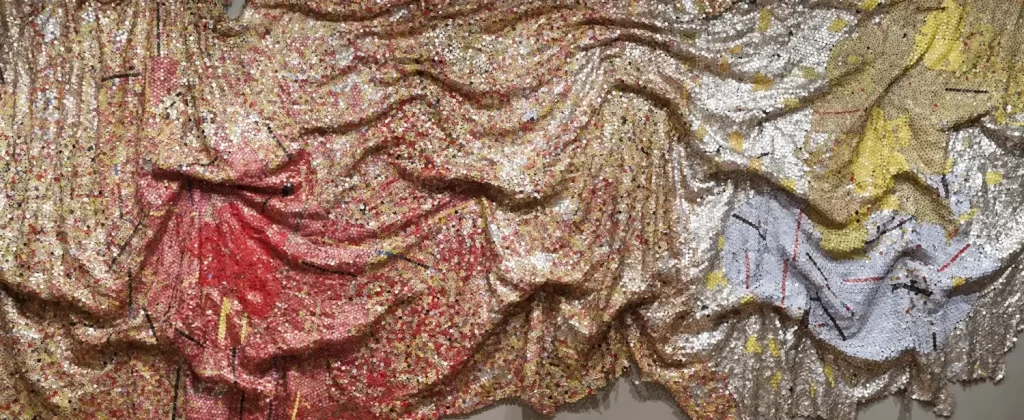
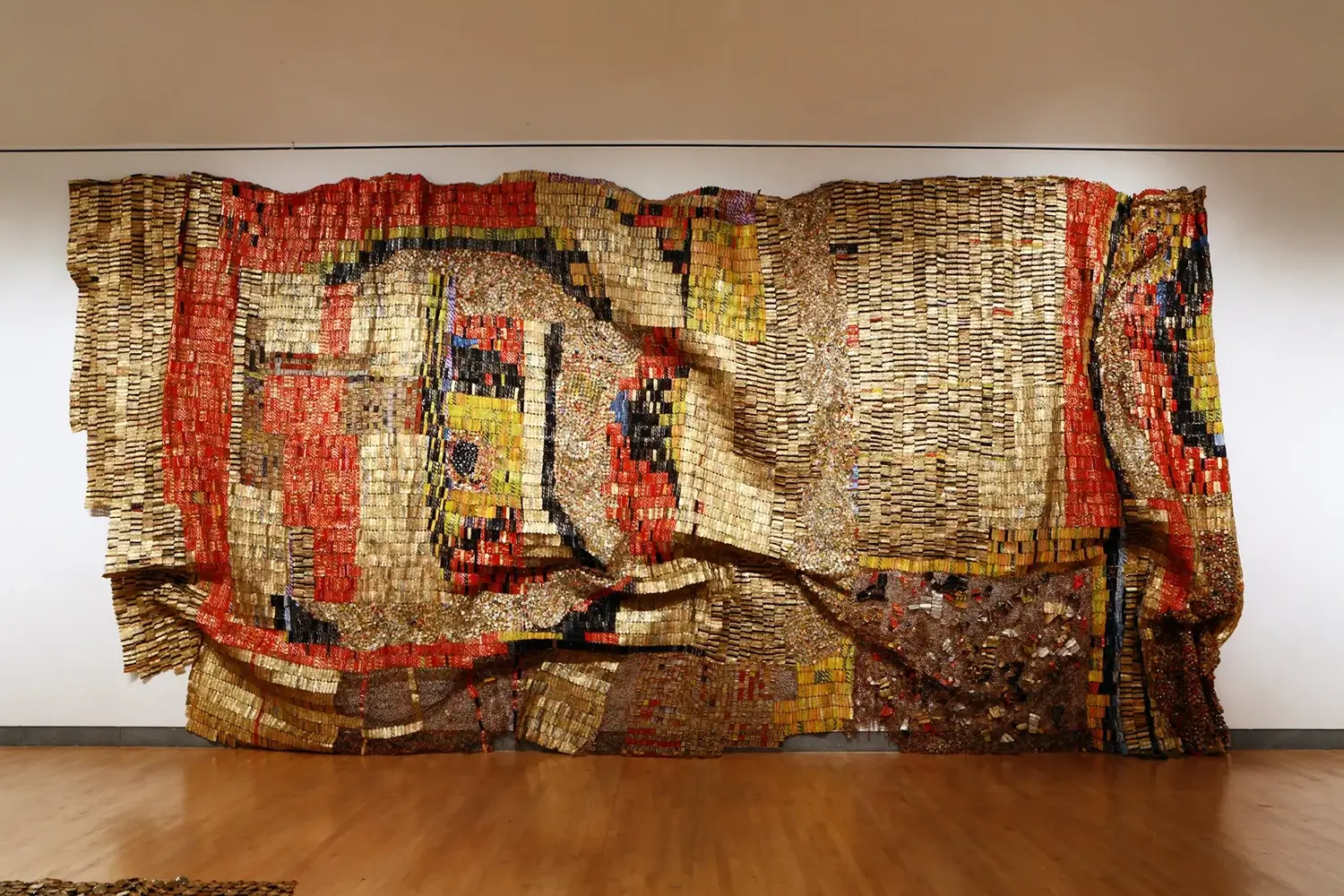
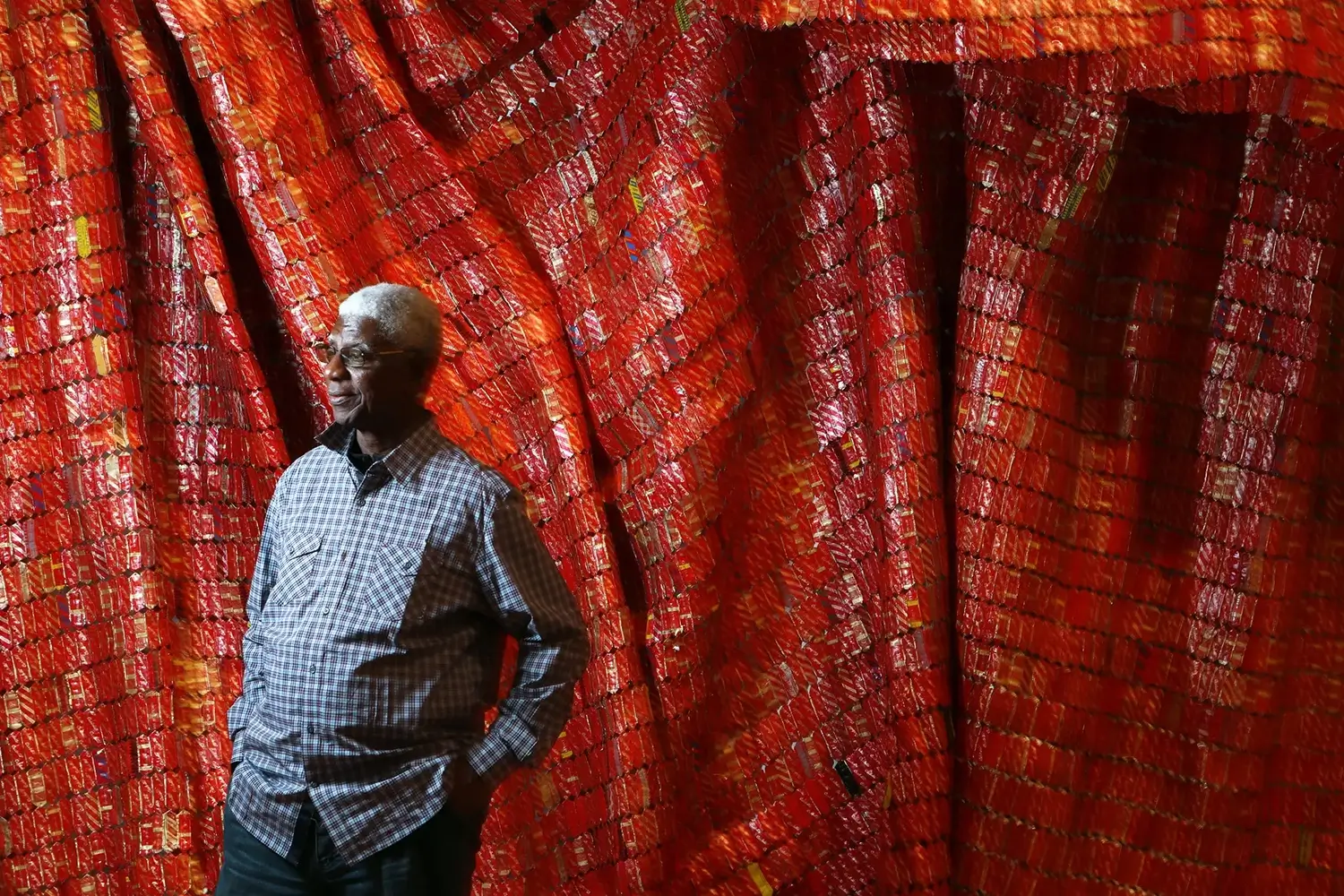
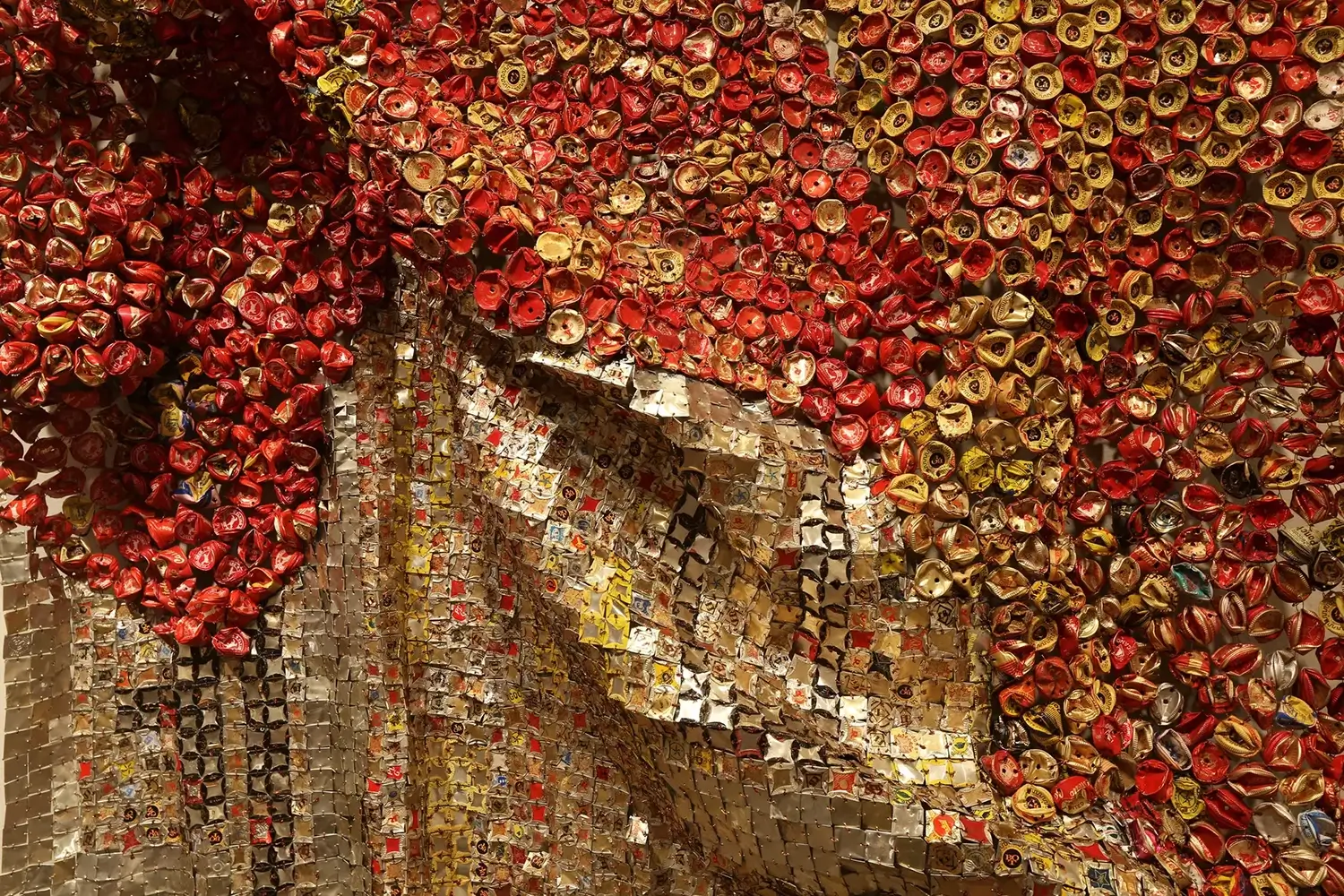
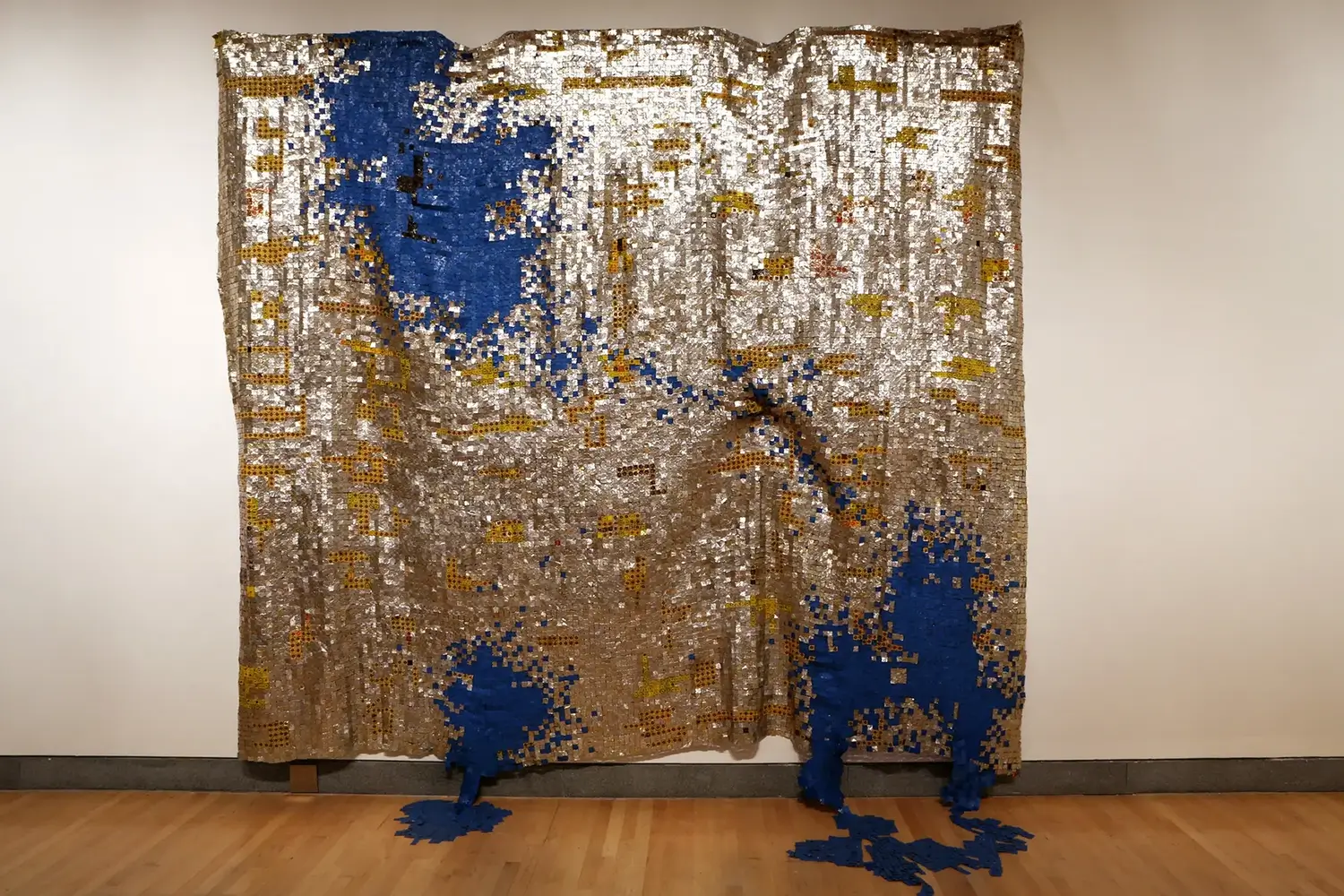
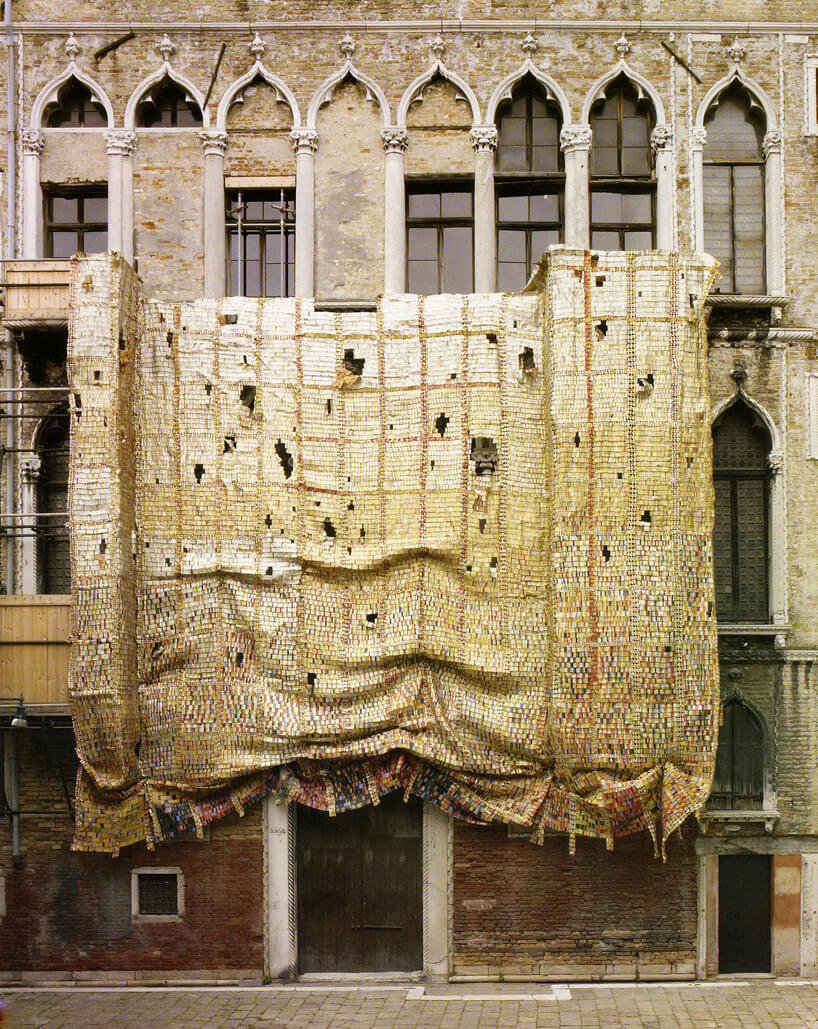



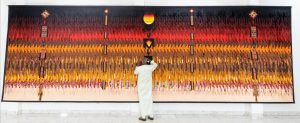
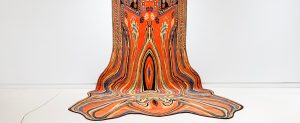















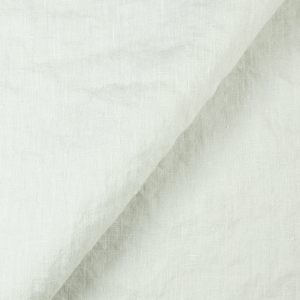




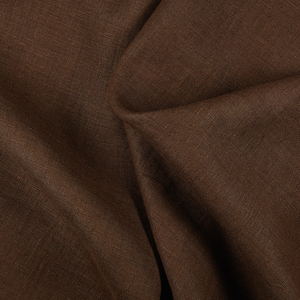



















2 Comments
Elizabeth Roddy
Fabulous! I love that I learn so much about contemporary artists and beautiful new works from this blog. Thank you.
Stina Lake
To me this is the most stunning and exciting work I’ve seen in a long time!